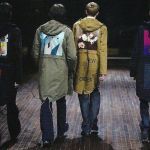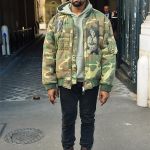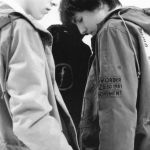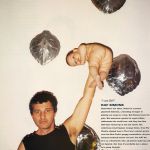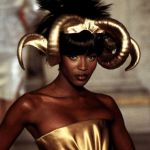
Why is streetwear obsessed with Raf Simons?
An analysis of the innovations that made the Belgian designer the father of the high-street-end
June 1st, 2017
Where does the Raf Simons obsession come from?
How could one designer become so iconic and relevant for both streetwear and fashion culture?
Everything started in the early '90 when Jean Paul Gaultier broke into fashion with a grunge revolutionary wave that radically changed people outlook on high fashion. It was such a wide and deep shift that also the more institutional magazines like Vogue instantly jumped on that train. Maybe someone will remember Grace Coddington and Steven Meisel's groundbreaking Grunge and Glory editorial on Vogue back in 1992.
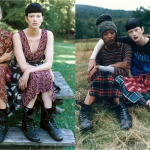
Grunge an Glory 1992
The now-turned-dogma that states:
"designer's fashion can dress you any time of the day and any time of the year in every possible situation and condition"
actually derived from that revolution. Raf Simons grew up as an industrial designer and his taste for fashion was heavily influenced by Martin Margiela (Gaultier's protégée) and Helmut Lang. It is extremely meaningful that the first fashion event Raf Simons ever attended was SS91 Margiela All White runway show. At the time he was an intern at the design studio of Walter Beirendonck, who took him to Paris fashion week for the first time. His background as a furniture designer and his passion for fashion-forward 90's designers are two key points to interpret and understand Raf Simons approach to fashion design.
When he finally debuted with his eponymous fashion label in 1995, since his very first outcome, the designer's interest in underground art and music environment was totally explicit. The best-known designs from that collection: Sea of Desires and Inverse Future print series manifested the designer's deep knowledge of graffiti and skate culture.
Raf Simons has always been reinventing the streets on the runway. The so-called "trickle up theory" of trends finds a perfect example of him. However, what definitely consecrated him was the capacity to perfectly incorporate all of his taste for grunge, street-culture and underground music with minimalistic and intellectual late 90's fashion statements.
Raf Simons found the perfect formula to position himself right in the middle between the underground fresh-off-the-street culture and the most intellectual fashion sophistications. The perfect example can be found in his SS00 collection Summa Cum Laude where he took inspiration from both gifted MENSA students and Gabbers, an underground movement of young people that promoted Hardcore Techno music and use of drugs, such as Speed and MDMA. Simons have been capable lof attracting a large crowd of admirer ever since, thanks to his unique approach to design and his strong connection with cult artists and musicians. One of the heights cross-over moments was in 1998 when Raf Simons featured members of German Krautrock band Kraftwerk as models for his Radioactivity collection. He became almost immediately one of the most beloved designers by industry insiders and artists. His Mida's touch made everything he touched turn into an instant cult. For all the before-mentioned reasons many people started collecting his garments. Some of them - the rarest and most sought after- reached extremely high quotations on the market.
Speaking of recent fashion phenomena, Raf Simons, together with Jun Takahashi, could be considered as father and precursor of the High-Street-End movement. This new wave promotes an intellectual and sophisticated approach to streetwear.
Brands like Cav Empt, Hood By Air or Facetasm heritage is deeply rooted in Raf Simons work. This is one of the reasons why Raf Simons is seen as one of the most relevant names in the industry, not just by fashion geeks, but also by streetwear deepest connoisseurs. It is also true that fashion and streetwear paths in the last decades crossed multiple times and now is hard to draw a straight line between the two. For what concerns the largest and less-educated audience of Raf Simons fans, that is thanks to the massive hip-hop artist endorsements seen in recent years.
When fashion rappers became a thing, hip-hop artists started endorsing brands like Rick Owens, Jil Sander, Raf Simons and Helmut Lang, instead of the classic Gucci and Vuitton stuff they were used to. Often when we see a celebrity wearing ultra-rare Raf Simons archive pieces that are thanks to the stylist and collector David Casavant. So ironically is mainly thanks to him if Raf Simons gained such a big popularity among hip-hop fans and streetwear kids.
"I like creating something that is not just about me, it's about people who can relate to that thing and, all together, it becomes an environment",
said the Belgian designer during an interview with 032c. And that's exactly what Raf did. Throwing, year after year collect collection after collection, the foundations for a new environment, helping to shape, with his critical eye and the careful observation of the fashion system, what today is widely known as "contemporary aesthetics".

















































